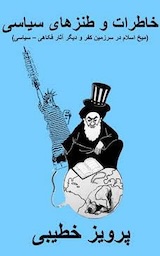This year coincides with the 106th anniversary of the invention of the first electronic memory in 1918. Early memories or flip-flops could only store one bit of information. In other words, a small step in a long and dreamy path of the current digital world.
The issue is very simple: you can use an ordinary pencil that has an eraser at the end, you can put any topic in your mind on paper in any way and then edit it in any way you want or erase it completely and start a new topic. Bring paper. This was the ideal memory of mankind in the past few thousand years. Enter information in a field. You can easily erase and repeat this many times.
In 1918, this dream was realized electronically by two British physicists. Of course, in very small dimensions and only one point.
Recording and recording information was an important factor for correct and accurate prediction of the future from the very first days of human life on this planet. In this way, mankind was able to accurately predict the exact time of monsoon rains and the right crops, and determine the exact right time to store food for critical days and probably the right time to migrate.
In fact, the human being is a clay tablet; A smooth stone or wooden plate; He had polished shells and later paper and animal skins. There were many technical points in data recording from the very first day. density of information per surface unit; The conditions of keeping the plaques and works and finally the question arises as to how the information contained can be deleted or edited.
For example, in the case of stone tablets, the process of erasing information and polishing again to write new information is a difficult, expensive and time-consuming task. In addition, the inscriptions on the stones were exactly like notice boards, and the author usually had no intention of erasing or, as they call it today, deleting or editing it, unless the successors of the king after his death decided that an epitaph should be written. to fade so that they are no longer readable.
A normal paper and pencil page with an eraser, which is usually attached to the end of the pencil or exists independently, which is used by elementary school children, is the best tool for noting and storing information, and possibly making changes and editing in the initial written text.
Erasing the written information and reusing the used media is the old desire of all writers, which is often accompanied by many problems. In a word, most of the inscriptions and writings and even published books are ROM doubts. It means Read Only Memory. Of course, in the current situation, there are advanced methods for reusing old magazines and newspapers that apparently do not need their contents, which of course are still expensive and require the collection and transportation of waste paper to workshops that They do the term recycling.
The most ideal memories for mankind; are RAM memories. High access speed to the information contained in them, as well as the possibility of erasing all or part of the current information and inserting new data, are the most obvious features of this type of memory.
In the early 20th century, the cinema industry had a growing trend, but movies were ROM type, time and high costs had to be paid to reuse them. .
In 1918, an amazing invention was made by two British physicists, which changed the fate of the future generations of mankind. It was just like putting a single dot on a white paper. That is, you press the pencil on the paper, when you remove the pencil, the effect will still remain on the paper for a long time. Probably, if you want to erase it and make the page white again and ready for the next use, this is possible.
William Eccles (1875-1966) and Frank Wilfred Jordan (1881-1941) built a single-bit electronic memory using what were then vacuum tubes. This single memory occupied a large volume. But it was the first step in a long march. In 1948, when the transistor was invented, the amount of single-bit electronic memory was also reduced, and now the same memory or RAM, as it is called today, is widely used in all electronic communication devices.
Developments related to the development and completion of electronic memories and providing them at a reasonable price that everyone can afford took about a century. From the invention of the triode lamp by the American Lee De Forest (1873-1961) to the construction of the transistor by three American physicists John Brdeen (1908-1991), William Shockley (1910-1989), and Walter Brattain (1902-1987) in 1948; It took about fifty years, but in the early 1990s, the result of all these inventions and inventions in the form of mobile phones at reasonable prices were available to most people in the society so that they could use the benefits of producing, storing, transferring and editing information.
despite the invention and development of all kinds of memories; The human brain is still the oldest and probably the best and most economical memory. However, the process of erasing information, especially with age and other disorders, threatens its optimal functioning. Probably the most important defect of human memory is copying the same content at different times. The storyteller changes the content of the files in different time situations for retelling.
Since the invention of one-bit flip-flop by British physicists, the electronic memory industry has come a long way and every day a lot of information is recorded in a small volume and the speed of accessing the information is increasing. The speed of developments is so high.










Comments